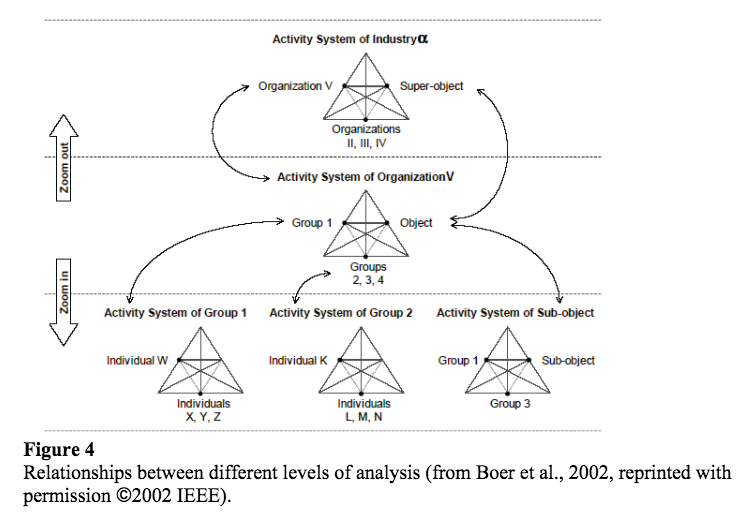n particular, we note how recent extensions to Activity Theory have addressed theoretical shortcomings similar to our five challenges and suggest directions for bridging the gap between everyday practice and systems support
theoretical base for the case study.
Tie this back to HCC readings/critiques by Halverson and Hutchins on distributed cognition.
